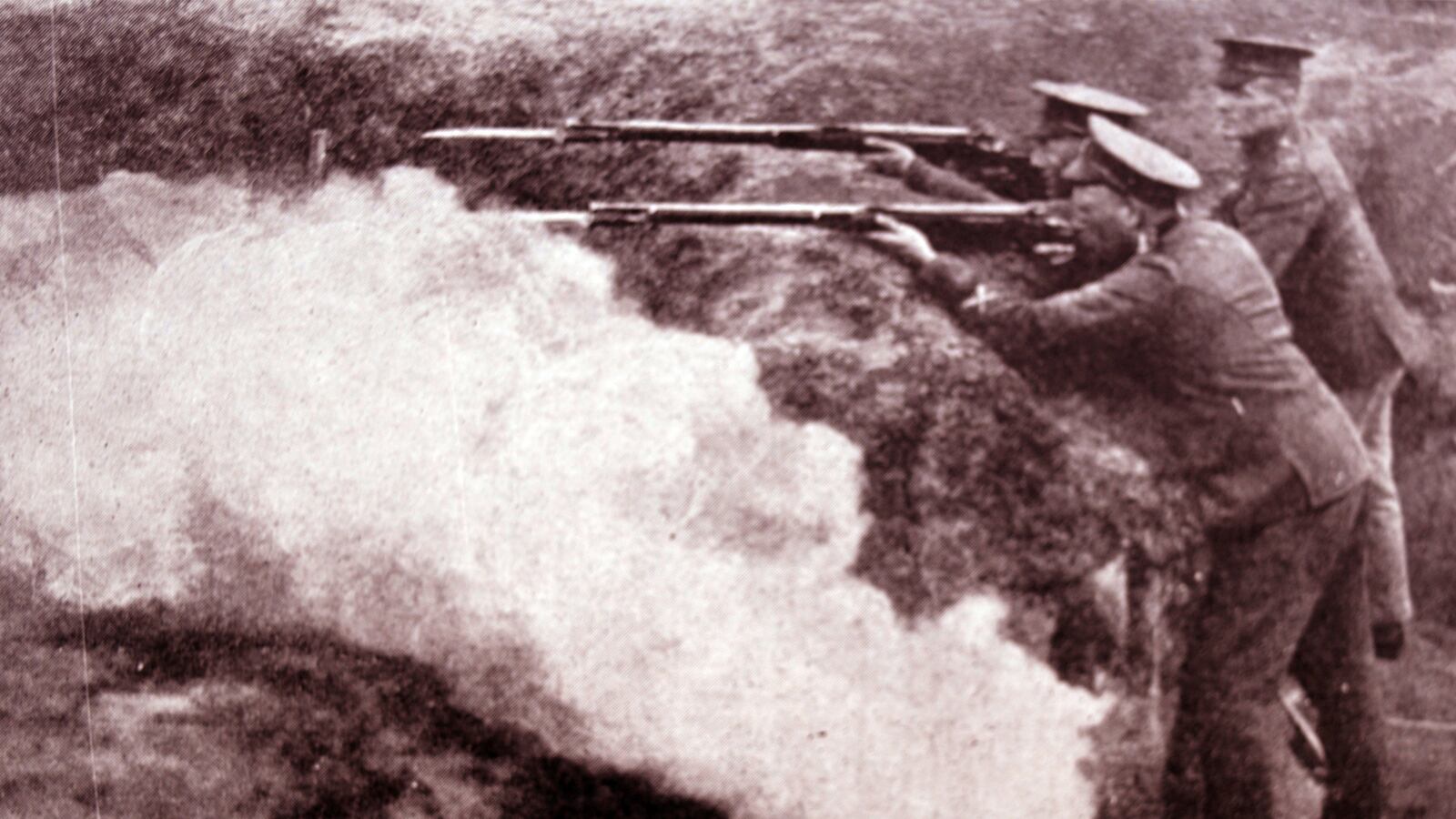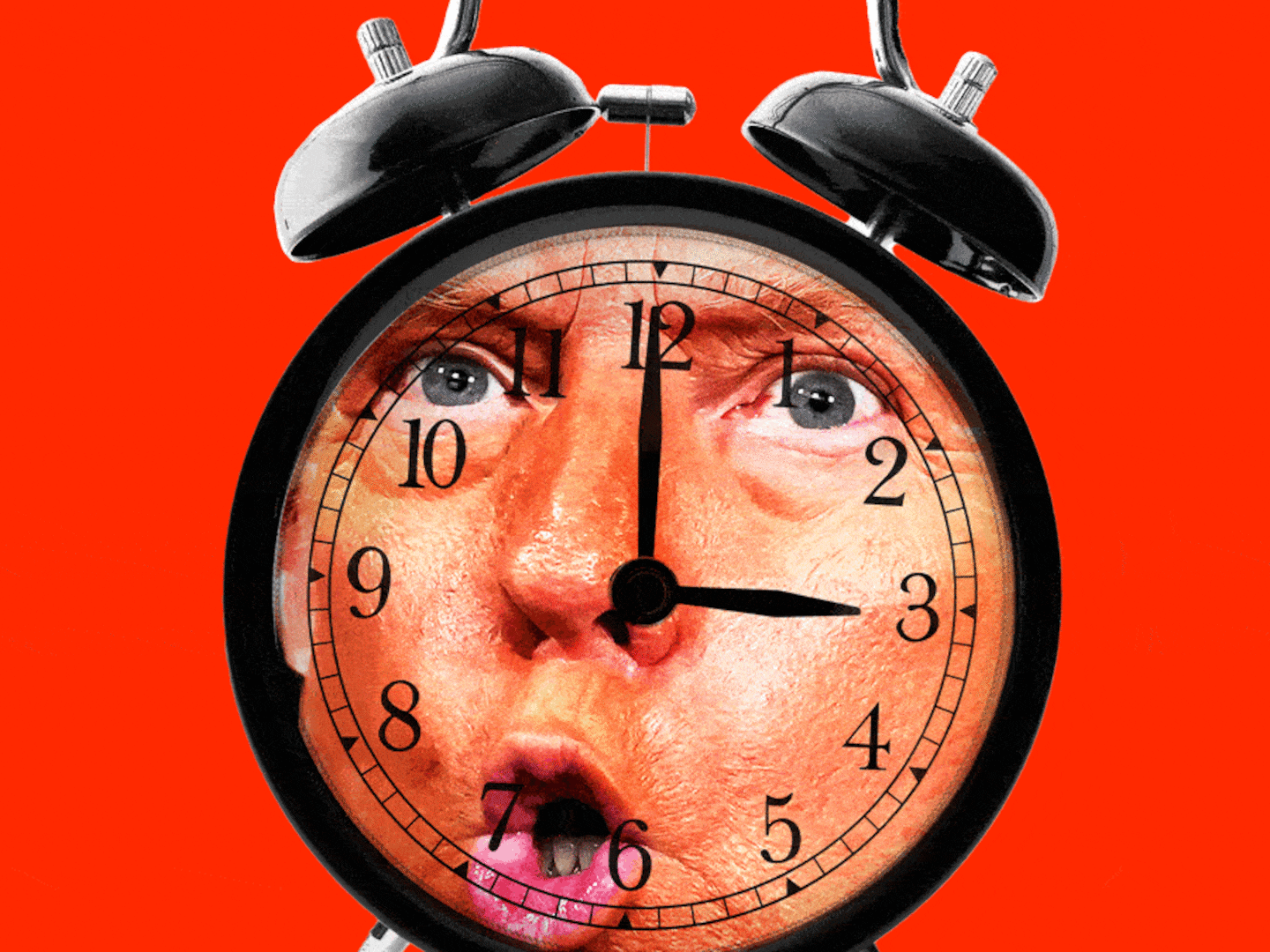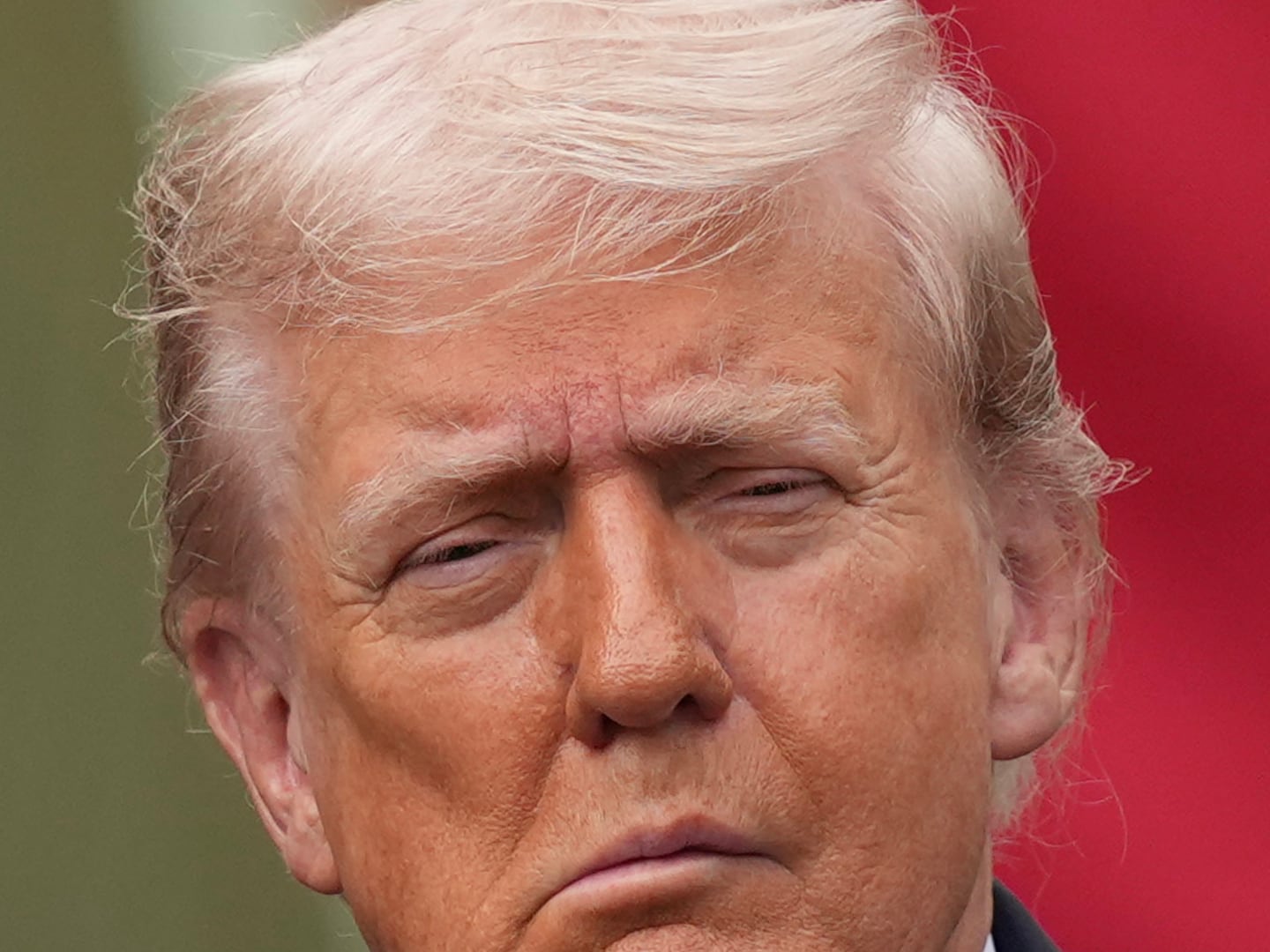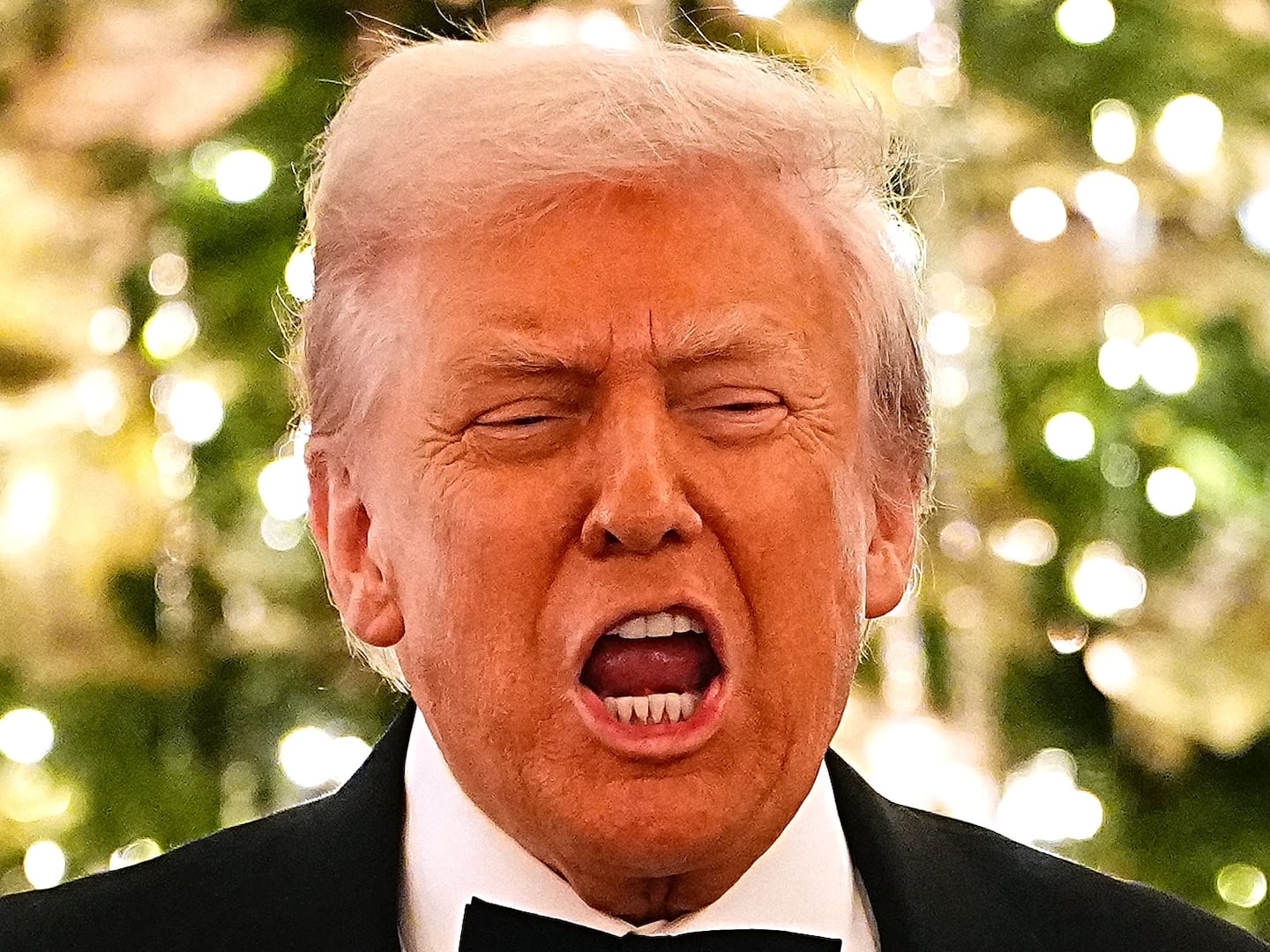During the first half of the 20th century European civilization embarked on a journey into the abyss: it moved from being the epicenter of sophistication, civilization, high culture, and knowledge, to become home to the most savage episodes of collective-barbaric-violence ever witnessed in the history of mankind.
World War I was a catastrophic turning point for humanity: 70 million men were mobilized to fight; nearly 10 million perished; communities were annihilated, and massive populations were displaced across Europe. The so call “war to end all wars,” paradoxically, created a more violent planet than what had existed before the first shots were fired.
Much of Europe in 1914 resembled a world of cosmopolitan tolerance, noble aesthetics, grand opera houses, and paternal kingdoms—which in some cases, but not all, ruled with benevolence, providing the subjects were loyal and obedient to their masters. By the time the Great War had ended just four years later, however, the sweep of democracies that had replaced the Tsarist, Habsburg, Ottoman, and German empires resembled something closer to Dante’s Inferno: a chaotic-hellish nightmare razed to the ground. And any semblance of normality that had previously existed seemed to have evaporated.
Many of Europe’s mothers and daughters were victims of extreme sexual abuse and violence, while its fathers and sons were among the scores of millions who lay maimed, wounded, and psychologically damaged for life.
These were the lucky ones who managed to survive.
So did this seemingly stable world, which inherited its rational values from key Enlightenment thinkers— who believed in the progress of humanity— tumble into chaos by mere chance? Or was there any truth to Leon Trotsky’s remark that while history offers no guarantees, it is not without logic.
Technology played an important role in helping to destroy the existing social order. In his 1901 book, Anticipations, the British science fiction author H. G. Wells predicted the decay of political systems across Europe, describing how the mechanization of warfare—which developed rapidly in tandem with modernity—would bring about unprecedented violent changes to the world.
Horrific suffering and horror emerged across both the eastern and western fronts during this period. And by 1918 there had been a tumultuous upheaval of the four dynasties that dominated East and Central Europe. Politics across the continent would never be the same again.
As early as 1905, French sociologist Emile Durkheim warned that while a war between his own nation and Germany would be the “end of everything,” an even darker force was presenting itself in the East: revolutionary socialism.
It would not, he predicted, create heaven on earth as envisioned in epic speeches and radical pamphlets that were being distributed by revolutionaries across Europe. Instead, it would return European civilization back to a period of darkness not witnessed since the Middle Ages.
Given what we what we now know about the heinous crimes committed in the Soviet Union in the name of utopian ideology, Durkheim’s predictions were fairly spot on.
World War I was an orgy of violence that Europe, and indeed the entire world, can still feel the tremors of today as we solemnly mark its centenary and pay our respects to the fallen. But when we grieve their loss, sadly, we now understand: they died for nothing.
The conflict witnessed the complete breakdown of the stable western civilization that arose out of the politics of the 19th century, which was a mixture of constitutional monarchies and autocratic kingdoms. The former believed in the role of the state as a provider, while the latter favored an iron fist approach to governance.
The sudden collapse of these societies is what the late British historian Eric Hobsbawn referred to in his book The Age of Extremes as “capitalist in its economy; liberal in its legal and constitutional structure; bourgeois in the image of its characteristic hegemonic class; glorying in the advance of science, knowledge and education, and profoundly convinced of the centrality of Europe [whose] major states constituted the system of world politics.”
To fully comprehend the short century that Hobsbawn has famously referred to as the “Age of Catastrophe”—that is the years 1914-1989—we need to understand how, and why, the existing social order dramatically disintegrated, almost without warning, as the First World War concluded.
So much has been written about the conflict over the last century that it’s hard to know where to start looking for credible answers to some of the fascinating questions that arise from it. Reading something that hasn’t been said already about the Great War is almost a challenge in itself.
Fortunately two new books by two distinguished British historians both take a fresh approach in analyzing the conflict.
In the introduction to Ring of Steel: Germany and Austria-Hungary at War 1914-1918, Alexander Watson claims this is the first modern history book to narrate the Great War from the perspective of the two major Central Powers.
The war began a month after the assassination of Archduke Franz Ferdinand and his wife, Sophie, Duchess of Hohneberg, by Serbian terrorists, on June 28, 1914. And it was existential fear, rather than feelings of certainties in the central powers’ military capabilities, that propelled the conflict into existence in the first place.
Watson’s main concern here is to try and figure out why the loss of the war for the central powers created the unstable states that emerged in the aftermath of the conflict. He finishes off the task he has set himself here with considerable precision and skill.
What makes the book so attractive is the author’s ability to distance himself from the typical metanarrative that has been framed about the conflict by other western historians hitherto. He points out, for example, that the major losses of the First World War profoundly changed the political landscape of central Europe indefinitely.
The ramifications of this can still be seen today. One needs only to look at the violent culture that pervades in places like Ukraine, and some of the Balkan states—where respect for the rule of law is minimal, and ethnic tensions run extremely high—to see how they are a direct result of the politics of the First World War.
Watson also reminds us that the armistice signed at Versailles in November 1918 humiliated Germany into taking full responsibility for the war, as well as landing them with incredible debt that crippled the German economy and brought on massive hyperinflation during the Weimar Republic of the ’20s. In turn, this economic catastrophe subsequently led to the rise of the Nazi party.
The financial implications weren’t the only reasons to make citizens fearful. Because the region was such a diverse mix of ethnicities, the self-determining-homogenous nation states that the American president, Woodrow Wilson, rather naively wished to see flourish actually sent this part of Europe into complete chaos, rather than creating the stability that he had predicted.
And even though the treaties that were imposed on the new states by Allied forces were supposed to guarantee minority rights, ethnic conflicts in the countries that emerged in the former Austro-Hungarian Empire nearly doubled after 1918.
Watson’s narrative is excellent in unpacking the horrors of the conflict itself. And while the Great War may not have reached quite the level of barbarity that Europe witnessed during World War II, the historian points to numerous examples of depravity that are truly shocking.
He does, however, attempt to dispel some of the myths that have emerged from hearsay and rumor over the last century. Contrary to popular mythology, he explains, the German soldiers in World War I were not the monsters they are often made out to be by western propaganda.
The Habsburg army, however, Watson contends, were exceptionally bloodthirsty. He also notes that the violent history of the Balkans, which became known as the continent’s bloodlands (Winston Churchill once claimed that the Balkans as a region “generated more history than it could consume”) began long before the arrival of the fascist and communist regimes in the post-war period. “Decades before the advent of genocidal totalitarian states,” Watson writes, “military action, racial ideology, and ethnic conflict turned [the Balkans] into killing grounds, broke taboos, and sowed the seeds of later exterminatory warfare.”
This is Watson’s greatest strength as a writer: Rather than simply documenting violence as some arbitrary, evil deed, he traces the trajectory of each individual conflict. He then attempts to make sense of the violence almost from a scientific perspective.
Such a reading of history, he reminds us, displays how vulnerable nearly all human beings can be to committing acts of barbarity if the social fabric around them completely collapses.
If Watson’s book focuses predominantly on the voices of ordinary citizens across Central and Eastern Europe who actually fought in the war, Adam Tooze’s The Deluge: The Great War and the Remaking of Global Order 1916-1931 views the conflict from a geopolitical perspective.
There is a chilling contrast when one reads both of these narratives simultaneously: on one hand there is the noble rhetoric and false idealism used by statesman to justify wars in the first place, and then there is the cold reality of the brutal fighting in the trenches.
Like Watson, Tooze is intent on analyzing this period from a revisionist perspective. He wants to make sense of how the politics of World War I shaped the interwar period and led to the nightmare of 1939, when Germany invaded Poland and all hell broke loose.
Tooze’s thesis continually comes back to a single point: how the United States emerged from the conflict as the most dominating force in the world economy. In this sense, he argues, it is unique as a nation. In no previous era in human history had one country ever completely dominated world finance with such ease.
Tooze’s narrative begins in 1916, two years into the war, and ends in 1931, as the Great Depression crippled the world economy, encouraging an explosion of extremist politics from both the far left and far right across the world.
The historian lucidly documents the key events that created the fragile but highly militarized world order that emerged in the inter-war years: the outbreak of the Russian Revolution and the subsequent Bolshevik power grab; the signing of the infamous Brest-Litovsk Treaty in March 1918 between Germany and the Soviets; and how the poorly organized League of Nations emerged from the diplomatic disaster that was the Treaty of Versailles.
We only grasp radical movements like fascism or soviet communism only partially, Tooze convincingly argues, if we view them from the familiar perspective of the racist, imperialist mainstream of European history.
Instead, he postulates, “It was the future dominance of American capitalist democracy that was the common factor impelling Hitler, Stalin, the Italian Fascists, and their Japanese counterparts to such radical action.”
In Tooze’s view, the political landscape that emerged from World War I was a failed ideological liberal-progressive project launched primarily by Woodrow Wilson, who used America’s position of privileged detachment to frame the transformation of world affairs.
Wilson wanted to end imperialist rivalries in European politics. And only a “peace without victory”—the goal he announced to the U.S. Senate in January 1917—could ensure that the United States would emerge as the undisputed arbitrator of world affairs.
Tooze provides the reader with numerous questions here, such as: What had gone so wrong after 1918? Why was American policy miscarried at Versailles? Why did the world economy implode in 1929? And why did the Western Powers lose their grip in such a spectacular fashion in the decade following the end of the war?
By way of answering these questions, Tooze guides us through the numerous diplomatic and economic catastrophes that emerged from World War I. Eventually we start to get a well-rounded and extremely comprehensive insight into why Wilson’s American foreign policy was so misguided.
Wilson placed his faith 100 percent in American capitalist values, which he believed were natural byproducts of American exceptionalism: the idea that the United States is guided by God’s will to be morally and spiritually superior to the rest of the world.
But Wilson was gravely mistaken when he placed his faith in the idea that “markets and business would replace politics and military power.’ As Tooze writes, “the consequences of this push to depoliticize the world economy were perverse. Far from taking politics out of economic life, the result was to drive Europe ever more deeply into the greatest financial and political entanglement of all—reparations.”
Reading these books side-by-side, many readers will come away perhaps, like I did, with intense feelings of sympathy for the citizens of Central and Eastern Europe. Primarily because the way most of us in the west and Anglophile world view the history of the Great War is from the winning side.
The danger of taking such a straightforward narrative at face value, however, is to ignore the desperate situation that those on the losing side were faced with when the Armistice was eventually signed.
The United States emerged as the true victor of World War I in every sense: militarily, economically and morally. But America’s gain was Europe’s loss.
And by 1918 much of Central and Eastern Europe was starving and destitute.
As Tooze and Watson both consistently remind us in their excellent analysis of this great historical epoch, Wilson’s biggest mistake was to place “the self-determination of peoples’” at the center of his post-war vision. While this slogan may have made for healthy wartime propaganda, and increased his popularity in the short term, it was an extremely naïve view of how the emerging order would eventually play out on European soil. And it merely delayed the apocalyptic maelstrom that followed rather than preventing it.
Both authors suggest that today we must recognize that a failed American foreign policy during this time only helped to aid the drastic ideas that emerged in the coming decades.
It may sound slightly histrionic to connect the gas chambers of Buchenwald and Auschwitz in the ’40s to the failed diplomacy of the United States in the ’20s. But as both these books remind us, history doesn’t just fall out of the sky: it has curves and bends where reasons emerge from decisions made by powerful men in times of crisis.
Following the Great War, tolerance across Europe would be replaced by extreme hatred. And ideas promising utopian living—in the form of both fascist and communist politics—would fairly quickly come to shape the new era: which was a zero sum game style of politics.
While both these narratives provide us with a superb insight into the collapse of a stable Europe, literature is often another good place to turn to when trying to figure out how a society has drastically changed.
In his final novel, The Emperor’s Tomb, published in 1938, the Austrian writer Joseph Roth’s central character, Franz Ferdinand Trotta, ponders the favourable life he led under the reign of the Habsburg Empire: “Before me,” he writes, “spread the whole bright landscape of life, scarcely bound by the rim of a far distant horizon. I lived in the cheerful, carefree company of young aristocrats.”
Nostalgia for the old Austro-Hungarian dominion, its prosperity and concentration of cosmopolitan culture, are often at the core of Roth’s majestic novels.
As Hitler became Chancellor of Germany in 1933, Roth took a one- way train from Berlin to Paris, never to return. In a letter to his fellow Austrian writer, friend, and editor, Stefan Zweig—who later commited suicide because of anti-semitic policies that the Nazis implemented across Europe—Roth poignantly describes the world on the cusp of a catastrophe: “Do not deceive yourself, he wrote: “Hell reigns.”
Roth’s journalism also had an uncanny knack for predicitng the future.
In an essay he wrote in 1933 entitled The Auto-da- Fé of the Mind, he aptly delineated the burning of books by the Third Reich, and the expulsion of Jewish writers from Germany, as “an apotheosis of the barbarians.”
Watson’s and Tooze’s narratives not only both point out the main reasons for this great upheaval of violence in Europe that Roth describes with such prescience. But, more importantly, they also reveal something far more frightening: how a seemingly stable system of government can descend into chaos and barbarism when one or two factors tip the balance out of kilter.
Taken together, these books provide an enormous understanding of just how fragile all human societies are, however civilized, cultured, and stable they may appear at first glance.
In every historical narrative there will always be those who wind up on the winning side with the feeling that they have somehow gained a sense of moral superiority. But it’s the losers we should often pay more attention to. They are the ones who often end up indulging in the most brutal forms of violence in an attempt to restore themselves to their former glory.
A simplistic analysis of history tends to refer to this as a battle between good and evil. Indeed, even today, this how most conflicts around the globe are still portrayed by much of the mainstream media.
However, as both these authors correctly point out, history is packed with complexities, paradoxes, and wrong turns that only posterity, with the benefit of hindsight, can attempt to analyze why the darker elements of the human condition so often surface in times of conflict.
Back in 1918, as the remains of 10 million corpses began decomposing into the bloody soil of a world that would be forever changed, there were constant cries from statesman, citizens, and civil society of “never again.”
But if history teaches us anything, it’s that the past doesn’t prevent us from making the same mistakes, over and over again.
With each passing day the battle in the Middle East between Islamic State militants and the West more closely resembles Europe’s religious wars of the 17th century, and global stability once again looks increasingly under threat.
Therefore one can only remain optimistic: hoping that the brighter sides of our humanity, which increases our altruistic side as a species, will somehow overcome fear and hatred at all costs.






